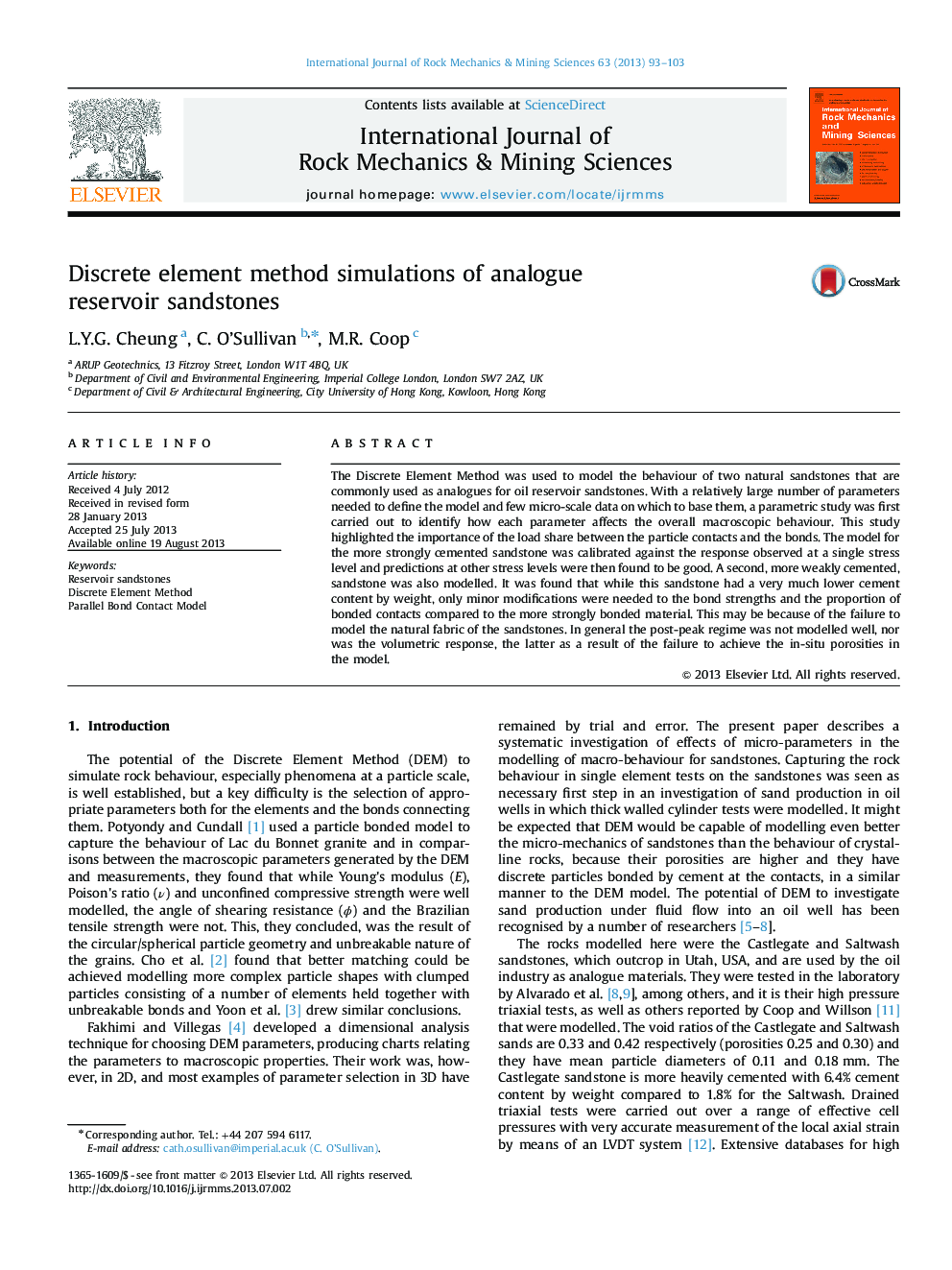| Article ID | Journal | Published Year | Pages | File Type |
|---|---|---|---|---|
| 7206777 | International Journal of Rock Mechanics and Mining Sciences | 2013 | 11 Pages |
Abstract
The Discrete Element Method was used to model the behaviour of two natural sandstones that are commonly used as analogues for oil reservoir sandstones. With a relatively large number of parameters needed to define the model and few micro-scale data on which to base them, a parametric study was first carried out to identify how each parameter affects the overall macroscopic behaviour. This study highlighted the importance of the load share between the particle contacts and the bonds. The model for the more strongly cemented sandstone was calibrated against the response observed at a single stress level and predictions at other stress levels were then found to be good. A second, more weakly cemented, sandstone was also modelled. It was found that while this sandstone had a very much lower cement content by weight, only minor modifications were needed to the bond strengths and the proportion of bonded contacts compared to the more strongly bonded material. This may be because of the failure to model the natural fabric of the sandstones. In general the post-peak regime was not modelled well, nor was the volumetric response, the latter as a result of the failure to achieve the in-situ porosities in the model.
Keywords
Related Topics
Physical Sciences and Engineering
Earth and Planetary Sciences
Geotechnical Engineering and Engineering Geology
Authors
L.Y.G. Cheung, C. O'Sullivan, M.R. Coop,
